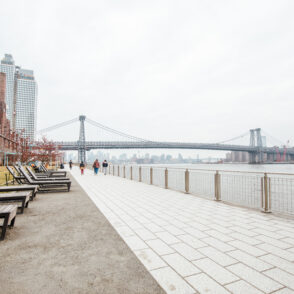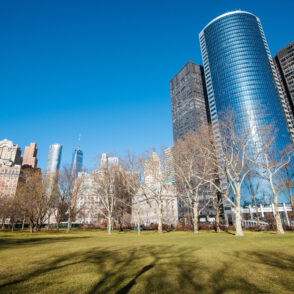If you live in an apartment, many of our go-to green home tips don’t apply. Renters usually can’t switch to an Energy Star dishwasher, keep a water-saving garden, install solar panels or add additional insulation. So, besides schmoozing your landlord to add eco-renovations, what’s an apartment dweller to do? Read on for five easy ways to green your living space:
Good news: you can join the grow-your-own-food revolution, even if you don’t have a garden. As long as you have a porch, balcony, windowsill or light-filled wall that gets at least six to eight hours of sunlight daily, you can still exercise your green thumb. Give your plants a boost with vertical planters (like the trendy Urbio or Woollypocket), a hydroponic system (like the innovative Windowfarm) and dedicated grow lights that run on timers.
If you’re looking for low-maintenance options, Fungaea has easy DIY kits for growing oyster mushrooms or organic sprouts, and Back to the Roots has the Water Garden, a cool self-cleaning fish tank that grows food.
Programmable thermostats are a great tool for conserving energy and reducing your utility bills (in fact, according to Natural Resources Canada, for every degree you turn down your thermostat at night, you can save two percent on your heating bill). Building supply stores have a wide range of programmable thermostats; for more of a splurge, we love Ecobee’s Smart Thermostat. It’s WiFi-enabled, so you can monitor your home comfort and change the temperature from your smartphone.
Your walls can be green, even if they’re painted beige! If you’re going for a synthetic paint, choose a low- or zero-VOC line, which won’t off-gas as much as conventional paint. Several manufacturers even offer recycled paint; Boomerang claims to have four times less greenhouse gas air emissions. Keep in mind that low- or zero-VOC means just that – low in VOCs. It doesn’t necessarily mean that the paint is free of harsh chemicals. Also, tinting the paint adds VOCs (the darker the colour, the more VOCs).
For added peace of mind, you can go all-natural: Canadian company Homestead House has organic, biodegradable and natural milk paint; Green Planet Paints offers non-toxic, plant-based paint; and American Clay makes earth plasters with reclaimed marble sand and clays.
Garden-less apartment dwellers can still compost! Vermicomposting (or composting with worms) is ideal for smaller spaces. Worm Composting Canada has an excellent how-to guide to get you started. A second option is bokashi composting, a practically odorless method that uses microbes to decompose food scraps. With a bokashi bucket, you can compost produce, bones, meat, poultry and fish.
Perhaps the bigger question surrounding apartment composting is what to do with the outputs. Use your newly composted soil for houseplants, or offer it to a friend or family member with a garden. You can also give it away on Freecycle or Craigslist, or donate it to a community garden, school garden or farm.
Apartment living brings out the MacGyver in all of us. Doing a few simple repairs and retrofits can equal big water savings. Fixing a leaky faucet is usually as simple as replacing a worn-out washer, and you could save up to 530 liters per week. Installing a low-flow showerhead is another great idea – a 10-minute shower uses up to 190 liters of water, and switching to low-flow can reduce this by half.
If your landlord won’t replace an old toilet with a dual-flush model, do a low-cost retrofit yourself. Options include the Moen Dual Flush Water Saving Toilet Conversion Kit and the HydroRight Dual-Flush System.


